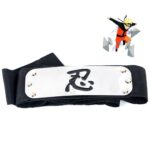As a child, I remember being very excited when my parents would buy me a new toy. I played with the toy until it was worn out and then would immediately want another one. This is something that most children do; they are constantly looking to find more things to play with.
The best way to develop a child’s cognitive abilities is by giving them plenty of opportunities to interact with their environment. You can help your child increase his or her brainpower by encouraging him or her to explore through different senses. One great way to do this is by using sensory toys.
Sensory toys are designed to stimulate various senses in order to encourage learning. Some common sensory toys include touch and movement while others involve hearing, sight, smell, taste, and even sound. Some of these toys are small enough to fit inside the palm of your hand while other are large enough to fill an entire room. The type of sensory toys you choose will depend on what your child needs the most stimulation from.
When selecting toys to use with your child, keep in mind that sensory toys should be age-appropriate. Children under three years old should not have any toys that contain sharp edges or hard materials. Babies also shouldn’t have any toys that are too challenging because they may be put at risk for injury.
A person can plan to use the lots of great ideas that will help in getting the results. In the long run the option will give some good results. The only thing that the person will have to ensure to get the good results by using the toys. A person can plan to reach the goals in the future. a person can make good amount of eth profits.
Here are some examples of sensory toys that can serve as helpful tools for young children.
TOUCH AND MOVEMENT TACTILE TOYS
Tactile toys are designed to provide stimulation to all five senses. They are used by children under three years old and often come in the form of shapes like balls, blocks, or discs. Tactile toys require little to no motor skills but instead rely on visual and tactile cues to get your child engaged.

One example of a tactile toy is a set of wooden blocks. The blocks are made of soft wood so that kids won’t hurt themselves if they accidentally knock into them. There are several different block designs in the set including animal shapes, geometric shapes, animals, and more. Kids enjoy playing with these blocks because it helps them learn cause and effect. When they put blocks together they create a certain shape, which causes the blocks to fall apart again.
Another kind of tactile toy is a ball. Balls can be purchased individually or in sets. A variety of types of balls are available including balls that squeak, squish, roll, bounce, and spin. These balls appeal to both adults and children because they allow people to engage in activities such as throwing, catching, rolling, kicking, jumping, bouncing, and spinning.
MOVEMENT EXERCISES
Movement exercises are a type of activity that provides stimulation to your child’s vestibular system which is responsible for balance and coordination. The vestibular system responds to changes in the body’s position and movement and plays a part in our perception of space. Movement exercises can be done indoors or outdoors and often involve a wide range of activities such as running, hopping, dancing, swinging, skipping, walking, jumping, climbing, balancing, and crawling.
A few movement exercises that are fun for children include:
Jumping rope
Hula hooping
Crawling
Riding tricycles
Walking in place
Sitting on a chair and moving back and forth
Playing catch
Rolling down hills
Swinging
Bouncing
Swimming
These movement exercises can be done alone or with a partner. It is recommended that you check with your pediatrician before doing any exercise or activity with your child, especially if you suspect they have trouble with balance.
AUDIO TOYS
Audio toys are similar to those described above because they are designed to be used by young children. They can be bought separately or in packages. Some audio toys are called ‘buzzers’ because they make loud noises when pressed against the person wearing them. Other kinds of audio toys are more like music boxes and play songs.
Some popular buzzer toys are musical rings, drums, windup frogs, and talking watches. Musical rings have colorful bells in the center and are meant to be shaken. Drums are typically made from plastic with metal drum heads. Windup frogs talk and shake like maracas and have buttons and rattles on the top. Talking watches are shaped like clocks and feature a speaker and a button that makes loud clicking sounds when pressed.
If you’re interested in trying out some of these toys, check with your local craft store. Many stores offer free classes where you can learn how to make these types of toys.
SMELLY TOYS
Smelly toys are designed to enhance a child’s sense of smell. They can be categorized in two ways: ones that emit fragrances and ones that attract fragrances. Both of these categories include a wide variety of products. Smelly toys can be found in a number of places including pet stores, hardware stores, and department stores.
Some smelly toys that are appealing to children are:
Pets
Cats
Snakes
Dogs
Fishes
Animals
Flowers
Gardening plants
Food
Sweaty clothing

It goes without saying that it’s important to clean smelly toys regularly with soap and water. If you think your child might be allergic to a particular product, ask your doctor to test him or her first.
TASTE SENSORY TOYS
Taste sensory toys are meant to stimulate children’s sense of taste. Different taste sensations include sweet, sour, salty, spicy, bitter, and umami. Taste sensory toys are often sold individually or in sets and include items like food coloring, edible foods, candy, fruit snacks, juice, and gummies.
Taste sensory toys can be a bit messy since they usually consist of food items. However, the good news is that there are many safe options available. For instance, you can purchase food-safe markers or food-safe paints. Another option is to buy non-edible, edible markers that only leave behind a color stain when wiped off.
VISUAL AND SMALL OBJECT TOYS
Visual and small object toys are designed to stimulate a child’s vision. As mentioned earlier, children need to be able to see well in order to understand what is going on around them. Visual and small object toys can teach children about colors and shapes. Small objects can include buttons, keys, pegs, and magnets.
There are several different kinds of visual and small object toys including puzzles, flashcards, magnetic board games, and memory games. Puzzles are a great tool for teaching children spatial awareness. Flashcards are useful for developing verbal recognition. Memory games are designed to train a child’s short term memory. Small object toys can be purchased individually or in packages.
While there are hundreds of different kinds of sensory toys, there are some general rules to follow when purchasing them. First of all, you should take note of whether or not the toy is appropriate for children under three years old. Also, look for toys that are easy to assemble and disassemble. Finally, ensure that the toy has been thoroughly tested.
If you know someone who has a child that is struggling in school, consider buying a gift basket filled with sensory toys. Not only will this give your friend or family member a much needed break, you’ll be helping them increase their cognitive abilities in the process!







